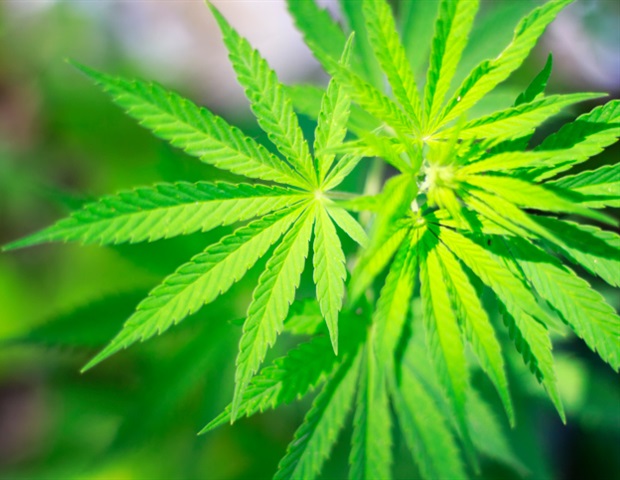Study Provides New Insight into How Cannabis Extracts May Work to Treat Epilepsy
[ad_1]
Research by pharmacologists at the University of Sydney provides new insight into how cannabis extracts can work to treat epilepsy.
The study reports for the first time that three acidic cannabinoids found in cannabis reduced seizures in a mouse model of Dravet syndrome, an insoluble form of childhood epilepsy.
The study was published in the British Journal of Pharmacology.
“Since the beginning of the 19th century, cannabis extracts have been used in Western medicine to treat seizures, but the prohibition of cannabis has hindered the advancement of science,” said Associate Professor Jonathon Arnold of the Lambert Initiative for Cannabinoid Therapeutics and the Sydney Pharmacy School.
“Now we are in a position to explore how the compounds in this plant can be adapted to modern therapeutic treatments.”
In 2015, Barry and Joy Lambert made a historic donation to the University of Sydney to advance scientific research into medicinal cannabis and therapeutic cannabinoids. Barry and Joy’s granddaughter, Katelyn, suffers from Dravet syndrome, which is characterized by frequent seizures and causes delays in cognitive and motor development. Conventional therapies often do not provide adequate seizure control and patients have a reduced quality of life.
The Lambert family say they have witnessed a dramatic improvement in Katelyn’s health using a cannabis extract and have become strong supporters of cannabis for therapeutic treatment. They also wanted to better understand how cannabis works to treat epilepsy and other health problems.
“After using hemp oil for the treatment, we got our daughter back. Instead of fearing constant seizures, we had hope that our daughter could have a life worth living. if the noise had cleared from her mind and she was able to wake up. Today, Katelyn really loves her life, “said Michael Lambert, Katelyn’s father.
In 2015, the Lambert Initiative established a pre-clinical epilepsy research program to help understand how cannabis extracts, a mixture of hundreds of bioactive molecules, have anticonvulsant effects.
Associate Professor Arnold said: “Our research program systematically tests whether the different constituents of cannabis reduce seizures in a mouse model of Dravet syndrome. We started by testing the compounds individually and found several constituents of cannabis with anticonvulsant effects.
“In this latest article, we describe the anticonvulsant effects of three rarer cannabinoids, all of which are cannabinoid acids.”
Acidic cannabinoids are the cannabinoids that are biosynthesized in the plant and found in homemade cannabis extracts used to treat children with epilepsy. One of these cannabinoids, cannabigerolic acid (CBGA), is the “mother of all cannabinoids,” Associate Professor Arnold said, because it is the precursor molecule for the creation of better known cannabinoids, such as cannabidiol (CBD) and tetrahydrocannabinol (THC).
“Cannabinoid acids are abundant in cannabis but have received much less scientific attention. We are only just beginning to understand their therapeutic potential,” Associate Professor Arnold said.
We found that CBGA was more potent than CBD in reducing seizures triggered by a febrile event in a mouse model of Dravet syndrome. Although higher doses of CBGA also had proconvulsant effects on other types of seizures, highlighting a limitation of this constituent of cannabis. We also found that CBGA affected many drug targets relevant to epilepsy. “
Dr Lyndsey Anderson, lead author of the study, University of Sydney
The study involved researchers from the University of Sydney at the School of Psychology and the Sydney Pharmacy School in collaboration with the laboratory of Dr Jennifer Kearney from Northwestern University (USA). Dr Kearney developed the genetic mouse model used in the study and mentored Dr Anderson before she moved to Australia.
The team is working to develop a better cannabis-based treatment for Dravet syndrome. Many in the community firmly believe that there is something uniquely therapeutic about the full spectrum of cannabis components that work together.
“We have evaluated the cannabinoids one by one and now we are exploring what happens when you put them all together. There remains a real possibility that all of these individual anticonvulsant cannabinoids may work better when combined,†Dr. Anderson said.
Barry Lambert said: “We are very proud of the work done by the many researchers at the Lambert Initiative, which is a world leader in cannabinoid research, and we especially welcome these recent results on” the mother of all cannabinoids “.”
Source:
Journal reference:
Anderson, LL, et al. (2021) Cannabigerolic acid, a major biosynthetic precursor molecule of cannabis, shows divergent effects on seizures in mouse models of epilepsy. British Journal of Pharmacology. doi.org/10.1111/bph.15661.
[ad_2]

